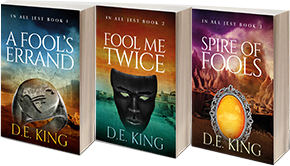Clowns
Whether dressed up for a birthday party or in an elaborate circus act, clowns are a reminder of the colourful jesters of history and their lasting impact on the world.
Clowns have ancient roots that can be traced back to various cultures and historical influences. In ancient civilizations, jesters and fools entertained royal courts, bringing laughter and satire to the ruling elite.
The tradition of clowning also found its footing in the Italian theatrical tradition of Commedia dell’arte1. This lively form of theatre brought us a merry troupe of characters, like Harlequin, with his snappy movements and colourful diamond-patterned outfit, and Pierrot, the lovable sad clown. Commedia dell’arte paved the way for the emergence of distinct clown archetypes that still tickle our funny bones today.
The evolution of clowning continued its merry march through history. The circus, that extravagant spectacle of wonder, became a stage where clowns truly shone. Think big-top tents, dazzling acrobats, and a cadre of clowns tripping over their own oversized shoes. It was here that the art of clowning reached new heights, captivating audiences with slapstick humour and physical gags that left them rolling in the aisles.
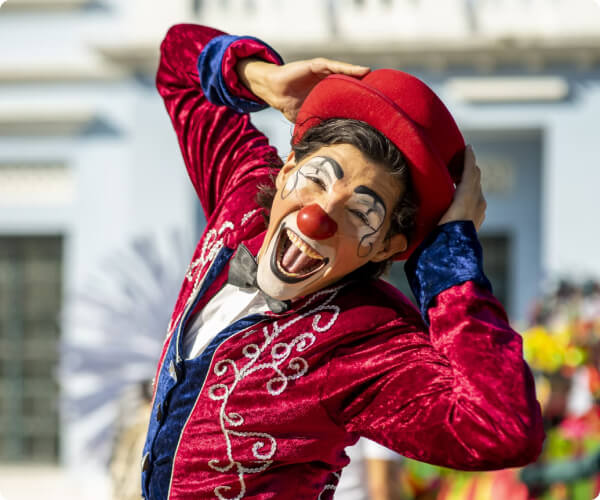
Clown | Photo Credit Dawin Rizzo
Types of Clowns
On closer inspection you will notice that not all clowns are the same. Just like the jester had their many facades and masks, so does the clown. From the delightful chaos of Auguste clowns to the whimsical elegance of Whiteface clowns, and everything in between, let’s take a whirlwind tour through the realm of clowns.
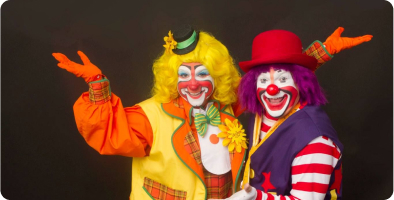
Sonshyne & Jots | Circus Daze
Auguste clown
This type of clown is known for being a fool or a jokester. The Auguste clown bursts onto the scene with a burst of vibrant colours and an infectious sense of fun.
They stumble, trip, and make a grand spectacle of their delightful clumsiness. Auguste clowns are masters of physical comedy, tickling our funny bones with their hilarious antics and leaving us in stitches.
The term ‘Auguste’ is thought to have come from the German slang for idiot, enhancing the foolish nature of these clowns 2.
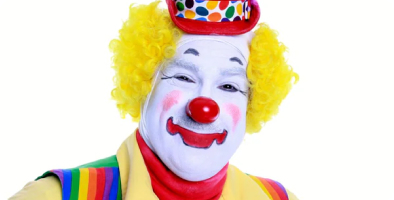
Whiteface Clown
In stark contrast to the Auguste clown, the Whiteface clown exudes an air of elegance and refinement. They appear as a pristine white canvas adorned with intricate makeup designs.
These clowns command the stage with their refined movements and expressive features. With their captivating presence, they embody the epitome of refined humour and theatricality.
These clowns can be traced back to Joseph Grimaldi who in 1801 dressed in what would become the standard for Whiteface clowns, with red triangles on his cheeks and wide red lips 3. However, the Whiteface clown also owes some of its origin to the Italian Commedia dell’arte whose masks wore similar expressions.
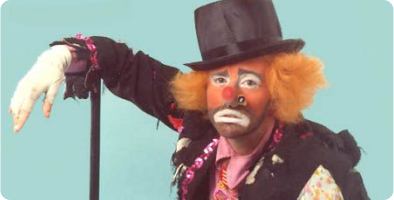
Tramp Clown | MyDisguises
Tramp clown
The Tramp clown brings the lovable vagabond to life with their tattered clothing, smudged faces, and mischievous twinkle in their eyes.
These endearing clowns capture our hearts as they navigate the world with their playful and often unpredictable antics. With a touch of charm and a sprinkle of mischief, Tramp clowns enchant audiences with their lovable and relatable character.
The Tramp clowns were thought to be inspired by the displaced vagrants who rode the trains during the Great Depression in America4.
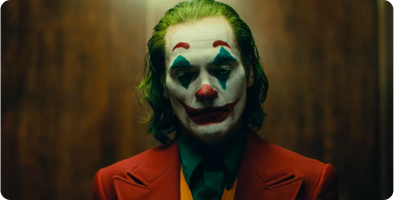
Joaquin Phoenix | The Joker (2019)
Character clown
These chameleons of comedy can transform into a wide range of personas, each with their own distinct personality and costume. From whimsical circus ringmasters to hilarious farmers, character clowns bring a multitude of characters to life.
With their well-defined roles and unique attire, they captivate audiences and transport them into a world of imagination and laughter.
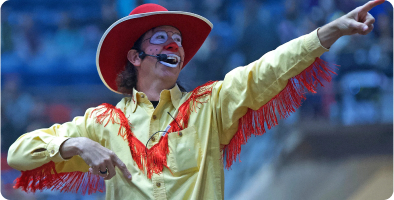
Rodeo Clown John Harrison | Photo by Colin Murphey
Rodeo clown
These fearless jesters bring laughter and excitement to the wild rodeo arena. Their primary mission is to ensure the safety of the cowboys and riders who take on the mighty bucking bulls and broncos. As the gate swings open and the powerful beasts burst into action, it is the Rodeo clown’s duty to divert the attention of the animals away from fallen riders and onto themselves.
With their quick reflexes and daring stunts, they protect the cowboys and entertain the crowd, adding a touch of humour to the adrenaline-filled atmosphere.
Rodeo clowns are masters of blending comedy and bravery, making them a vital part of the rodeo experience. Beyond their role as protectors and entertainers, Rodeo clowns also serve as ambassadors of the sport. They interact with the audience, engaging children and adults alike.
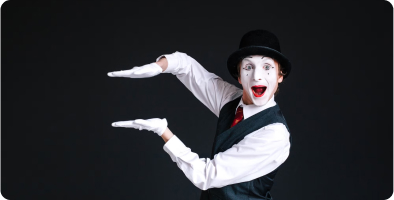
Mime Clown | Image by v.ivash
Mime clown
Without uttering a single word, these clowns communicate through exaggerated gestures and expressions. They captivate us with their ability to create entire stories and imaginary worlds using only their bodies.
Mimes, often associated with their distinctive white face paint and striped outfits, have a rich history that dates back centuries.
From ancient Greece and Rome to ancient Egypt and China, mime-like performances were prevalent in various cultural contexts. However, it was during the 19th and early 20th centuries in France that Mime as we know it today truly flourished 5. Artists like Jean-Gaspard Deburau and Étienne Decroux played significant roles in developing and popularising Mime as a distinct art form.
Mime clowns, also known as Pantomime clowns, typically have painted faces with exaggerated expressions and wear iconic striped outfits that make them easily recognisable.
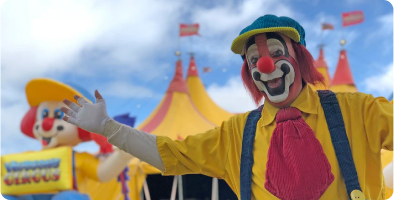
Matt De Gouldi as Circus Clown | Hudsons Circus
Circus clown
Circus clowns play a multifaceted role within the circus. They are the bringers of laughter, the comic relief that punctuates the awe-inspiring acts and breathtaking performances under the big top. They also ensure that the atmosphere remains joyous, light-hearted, and filled with laughter.
Circus clowns are the masters of physical comedy, utilising exaggerated movements, facial expressions, and humorous gestures. They juggle, balance, perform acrobatics, and engage in humorous skits, all while donning vibrant and eccentric costumes that reflect their unique personalities.
Much the same as the jesters of history, these clowns know how to keep a crowd entertained and on the edge of their seats.
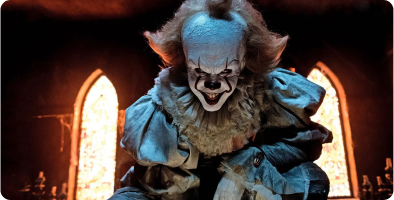
Pennywise | “It” (2017)
Scary clown
Scary clowns or the “killer clown” have made their menacing presence known within the pages of numerous books, weaving tales that play upon our deepest fears.
One notable example is Pennywise the Dancing Clown from Stephen King’s iconic novel, “It.” Pennywise embodies the perfect blend of clownish charm and malevolence, lurking in the shadows, preying upon the fears of children.
Scary clowns hold a unique position within popular culture, tapping into a primal fear that many individuals share. They exploit the contrast between their colourful and jovial appearance and their underlying sinister nature, creating a sense of unease and uncertainty 6. Scary clowns have left an indelible mark on both the literary and cinematic landscapes, invoking a unique blend of fascination and fear.
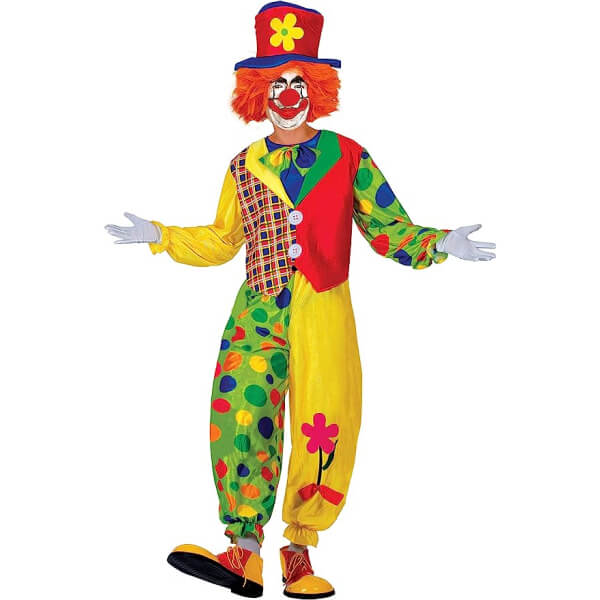
Clown Costume | Ciao
Just like the jester and their motley clothing, the clown is known for their colourful costumes. Clowns and their costumes are an integral part of their identity and performance. Professional clowns use their costumes as a means of self-expression, visual storytelling, and capturing the attention and imagination of their audience.
Clown costumes typically consist of several key components. The first is the oversized, brightly coloured clothing, often adorned with vibrant patterns and bold stripes. These exaggerated garments are designed to enhance the clown’s physical presence, creating a larger-than-life appearance that elicits laughter and captures attention.
The clown’s makeup extends beyond the face, with exaggerated features such as rosy cheeks, exaggerated eyebrows, and a red, bulbous nose. The clown’s hair is another notable aspect of their costume. It can take various forms, from wild, colourful wigs to fluffy and unruly tufts atop a bald head. The hair often matches the overall vibrant colour scheme of the clown’s costume, adding to their whimsical appearance and helping to define their character.
Accessorising the clown’s costume are props, such as oversized shoes, colourful hats, and comically large gloves. These items add a touch of physical comedy and allow clowns to engage in playful and humorous interactions with their environment and fellow performers.
Clowns have served as entertainers, jesters, and comedic performers, bringing laughter and joy to audiences throughout history. Over time they have evolved from the ancient clowns and adapted the clown tradition from the court jesters to create a new style of comedy and humour.
Modern clowns have embraced diversity and inclusivity, reflecting the changing landscape of society. They represent a wide range of backgrounds, styles, and expressions, breaking stereotypes, and challenging traditional notions of what a clown can be.
In the realm of modern clowns, we find a continued evolution of the art form. Clowns have adapted to contemporary times, exploring new performance spaces, and integrating technology and multimedia into their acts. They continue to entertain and engage audiences with their physical comedy, improvisation, and interactive performances.
From the modern circus clown to the evil clown character, or hobo clown, they all owe their origins to the jesters of old, carrying on their legacy of entertainment and laughter. With their comedic skills, improvisation, and ability to connect with audiences, modern clowns embody the spirit of jesters by bringing joy, challenging norms, and using humour as a powerful tool 7.
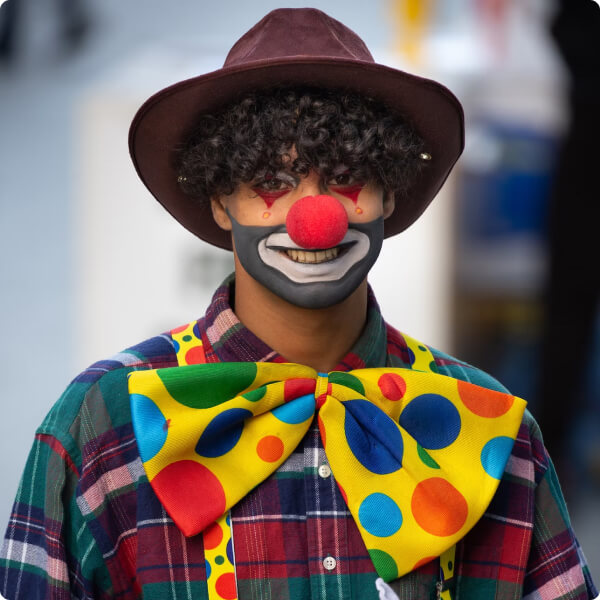
Resources:
- The Editors of Encyclopaedia Britannica. (2025, January 14). Commedia dell’arte | History, Characters, & Facts. Encyclopedia Britannica. https://www.britannica.com/art/commedia-dellarte
- Clownopedia, C. T. (n.d.). Auguste. Clownopedia. https://clownopedia.fandom.com/wiki/Auguste
- The Editors of Encyclopaedia Britannica. (2024, December 14). Joseph Grimaldi | Comedian, entertainer, dancer. Encyclopedia Britannica. https://www.britannica.com/biography/Joseph-Grimaldi
- The Tramp clown. (n.d.). Clowns to Hire. https://www.clownstohire.com/glossary/the-tramp-clown
- Official, L. K.-. T. (2021, September 6). Clowns – a Brief Look Into their History and Mythology – TheatreArtLife. TheatreArtLife. https://www.theatreartlife.com/circus/clowns-a-brief-look-into-their-history-and-mythology/
- McRobbie, L. R. (2023, November 1). The History and Psychology of Clowns being Scary. Smithsonian Magazine. https://www.smithsonianmag.com/arts-culture/the-history-and-psychology-of-clowns-being-scary-20394516/
- Fisher, M. (2022, June 22). The Trickster, the Jester, The Clown: The brief mythology and ancient history of the harbingers of laughter and fear. Martini Fisher. https://martinifisher.com/2019/04/26/the-trickter-the-jester-the-clown-the-brief-mythology-and-ancient-history-of-the-harbingers-of-laughter-and-fear/

